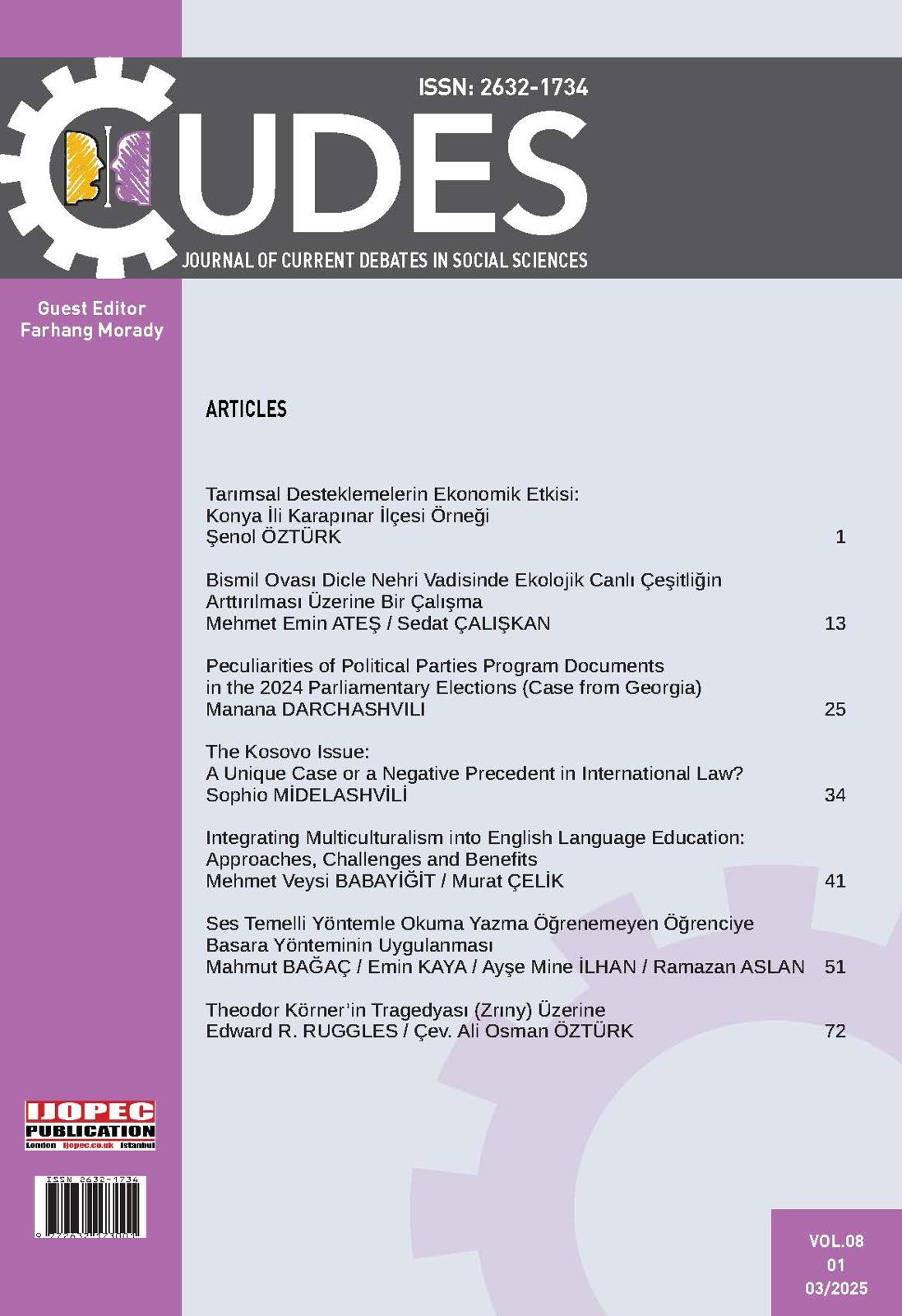Author :
Abstract
Bu çalışmanın amacı ses temelli cümle yöntemi ile okuma ve yazma becerisini kazanamamış özel öğrenme güçlüğü ve dikkat eksikliği olan bir ilkokul 3. sınıf öğrencisine “Basara Yöntemi” ile okuma yazma becerisini kazandırmaktır. Nitel araştırma desenlerinden eylem araştırmasının kullanıldığı çalışma 2021-2022 eğitim öğretim yılı 2. döneminde gerçekleştirilmiştir. Çalışma öncesi katılımcının ne düzeyde olduğunu anlamak için ön test olarak katılımcının tanıdığı harfleri belirleyen bir çalışma yapılmıştır. Katılımcı küçük harflerden a, ı, i, j ve k harflerini; büyük harflerden ise yalnızca A, E, I, İ, K, L, M harflerini tanıyabilmiştir. Çalışma sonunda küçük harflerden u ve ü harfini karıştırmış, t harfi yerine de dı demiştir. Büyük harflerden Ç, Ğ ve U harflerini öğrenememiş diğer harfleri ise tanımıştır. Uygulama sonunda katılımcının genel itibari ile alfabeyi öğrendiği ve basit kelimeleri okuyabildiği görülmektedir. Yapılan uygulama sonunda katılımcının okuma-yazma isteğinin arttığı gözlenmiştir. Katılımcının öğrenme güçlüğü çekmesi, uygulamada ilerlemenin daha yavaş yaşanmasına neden olmuş bu nedenle dikte çalışmalarına yeterince ağırlık verilememiştir. Sürenin az olması nedeniyle derslerde daha çok alfabe öğretimi ve basit hece ve cümle birleşimlerine ağırlık verilmiştir.
Keywords
Abstract
The aim of this study is to teach reading and writing through “Basara Method” to a 3rd grade student who hasn’t achieved these skills through conventional sentence based auditory method as she has specific learning difficulties and attention deficit disorder, This study which is a case study designed within the qualitive research paradigm, was conducted during the semester of the 2021-2022 year. A pretest was administered to the participant before the study to determine her current level. The participant could only identify lowercase letters a,ı,i,j and k and capital letters A,E,I,İ,K,L,M. At the end of the study, it was observed that the participant confused the lowercase letters u and ü and pronounced “dı” instead of “t”. She couldn’t learn capital letters Ç,Ğ and U, but she identified other letters. By the end of the application, it was observed that the participant generally learned the alphabet and could read simple words. By the end of the application, it was observed that participant’s motivation for reading and writing increased. Due to the participant’s learning difficulties, the progress was slower than expected; therefore, dictation exercises were not given enough emphasis. As it was a limited time, the focus was primarily on teaching the alphabet and simple syllable and word combinations.





